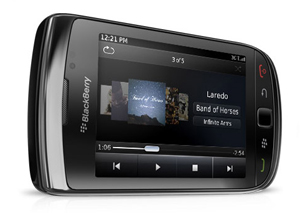Ryerson shows off digital inventions as GameON: Finance conference starts

To help new Canadian digital media start-ups grow, Ryerson University has launched the student-based Digital Media Zone (DMZ) to help incubate digital projects from within the educational institution.
And as the GameOn: Finance 2011 conference got underway Wednesday night in Toronto with an opening night reception at Ryerson, young digital media developers got a chance to show off their latest inventions to game industry delegates.
An example was Ryerson student Alexey Adamsky, who developed a Sudoku 3D mobile game for the Windows Phone 7 platform.
The mobile game is essentially Sudoku on an on-screen cube that spins as the popular puzzle game goes 3D.
“It’s a bit more challenging. The game takes more time, so people really like it so far,” Adamsky explained.
Mobile phone users can download a trial version of the Sudoku 3D game and, if they like the experience, can purchase a Windows Phone 7 version on the Microsoft marketplace site for $2 each.
Also through the DMZ incubator, former IBM employee Jamie Alexander has launched a start-up to develop iPad or iPhone apps that enable users to take popular music and remix it the way they want to make their own music.
Alexander said his proprietary software will enable musicians and other artists to promote their content by allowing tablet and smartphone users to interact with it musically.
How does it work? Alexander’s start-up, Sound Selecta, creates an iPad and iPhone app for a music label, for example. Music fans then download and interact with the free app, which promotes new music or monetizes music from a back catalog.
Alexander believes his music- and content-driven apps have real potential in the emerging digital marketplace, confirming his decision to leave IBM to go out on his own, via the DMZ.
“I have a family to support and I’m taking a real risk here,” he added.
The DMZ’s research mandate was really being shown off Wednesday night with a mobile app developed by Ryerson computer science professor Hossein Rahnama to enable smartphone users with disabilities to navigate the Paris subway.
Jon Suer, a research and innovation officer with the DMZ, explained that the mobile transit app uses context awareness computing to offer travel instructions appropriate for a person’s disability.
For example, someone who is blind can make their way through the Paris subway as their smartphone, using GPS positioning, gives them audio instructions on how to reach their destination.
Or a wheelchair user can be directed to elevators in a subway station, as opposed to stairs or escalators.
And if someone shakes their smartphone, transit authorities can be alerted to where they are for a rescue.
“If you keep traveling along your pathway, the app will tell you where you are and where you should be going to get to your final destination,” Suer explained.
He added Rahnama’s smartphone app, in allowing users to find the best route on a subway system, has future applications anywhere people congregate in big numbers and are likely to get lost, including in museums or festivals.
The GameOn Finance 2011 conference continues to Friday.

 The definitive CDN broadcast and production resource.
The definitive CDN broadcast and production resource.










